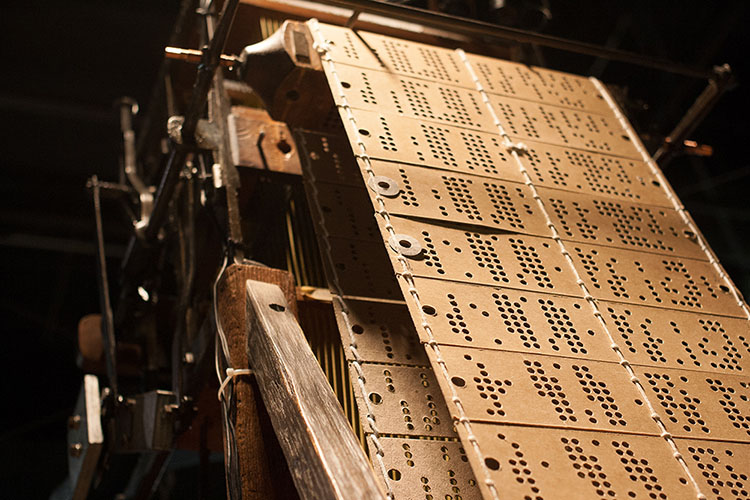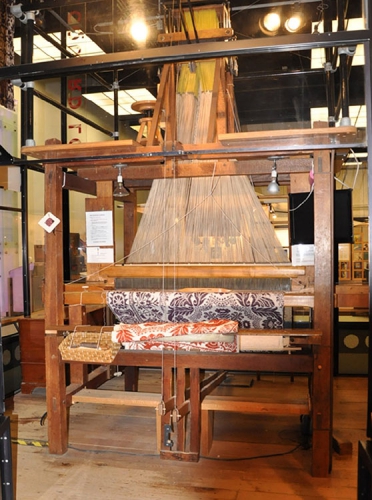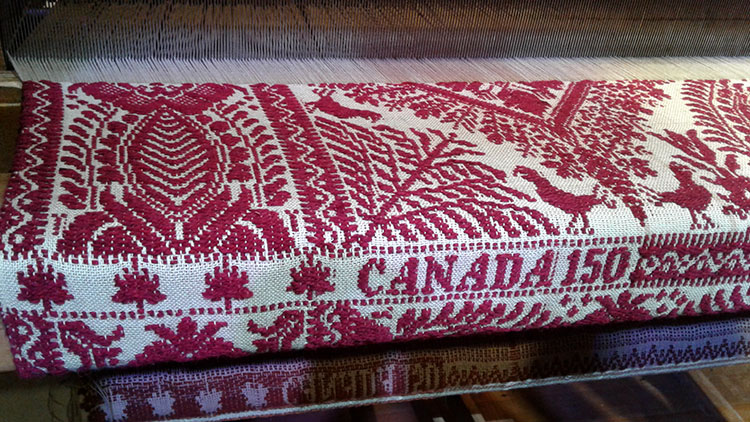Ontario Science Centre, Toronto

Ontario Science Centre weaving its way into history
The Ontario Science Centre is the proud owner of a 19th-Century Jacquard Loom, which uses perforated cards laced together to control the movements of the machine. The presence or absence of the holes on those punch cards essentially tells the loom to change its position. That’s how binary coding works, arguably making the Jacquard loom the father of modern day computer programming.
The Science Centre’s loom once belonged to a man named John Campbell. Upon his death, there were detailed accounts found of what he made and sold. From these books and the punch cards that came with the loom, we know of four main coverlet patterns that were woven. The Science Centre had just two of them, the Stars and Roses, and the Garland, but the Royal Ontario Museum had examples of the two other patterns, the Tulip and the Single Rose.
When volunteer Science Centre weavers got special access to see the ROM’s John Campbell coverlet collection, it was decided a special coverlet would be made in honour of Canada’s sesquicentennial. For the first time in nearly 150 years the Single Rose pattern is now being made at the Science Centre. “It makes me a bit proud,” said Hans Baer, the lead volunteer on this project. “This blanket was last woven in the 1800s and now in 2017 we weave it again because of all this work.”
After taking and staring at hundreds of detailed photos of the Single Rose pattern coverlet, Baer then determined where each point went, plotting every dot by hand on graph paper. Nearly 150 holes in 192 cards then had to be punched. “I love this stuff. It’s information technology at work,” said Baer, a computer engineer.
Nearly 29,000 holes later, the first phase is complete. With the cards laced up and ready to go, the actual weaving has begun. “Our Jacquard loom is from the 1840s and has been with us from the very beginning,” said Lorrie Ann Smith, the Science Centre’s Director of Science Education. “To be able to use it in this way and make history is amazing."
This story's themes
Photo Gallery
-

Credit: Ontario Science CentreJacquard loom -

Credit: Ontario Science CentreCanada 150 coverlet
Most viewed themes

